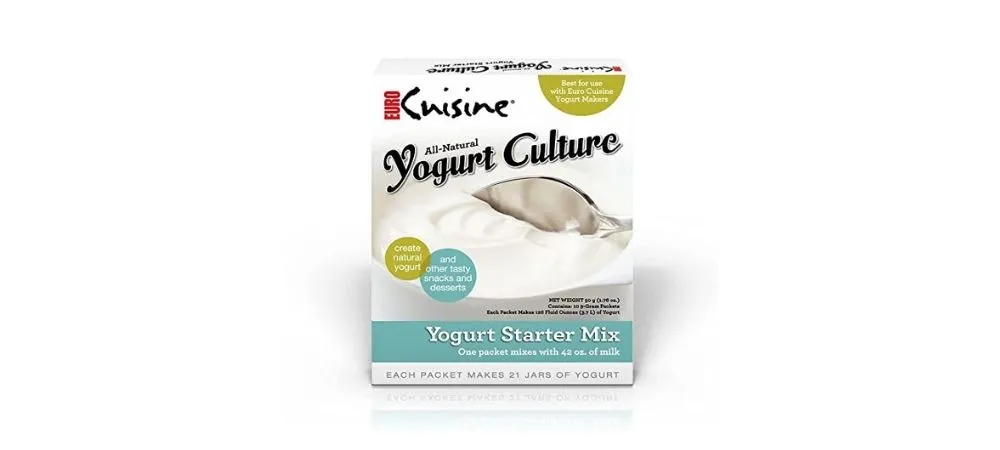Yogurt and milk are both dairy products that provide a variety of essential nutrients. Both yogurt and milk also give you protein, vitamins and minerals, and many other nutrients. The main difference between yogurt and milk is the amount of lactose (sugar) in the foods — yogurt contains less lactose than milk. Yogurt is also an excellent source of calcium and protein.
|
Yogurt is more nutritious than milk. People with lactose intolerance can digest yogurt but will not handle the milk consumption. |
Related Posts:
- How much Yogurt is Too Much?
- How much Fiber is in Yogurt?
- What is the Healthiest Dairy – Fat, Non-Fat or Low Fat?
- What are the health benefits of Yogurt?
- How many Calories in a Yogurt Parfait?
- How many Carbs in Frozen Yogurt?
- How many Ounces of Yogurt in Cup?
- Is it Healthy to Eat Flavoured Yogurt In Breakfast Daily?
Here is the Core Difference Between Yogurt and Milk:
Grass-fed milk is milk that comes from cows whose diets consist of only grass and other foraged foods. Grass-fed dairy contains more omega 3 fatty acids than grain-fed animal products, making it healthier than conventional milk. It also has higher vitamin A, beta carotene, vitamin E, and CLA (conjugated.
- Milk, including fat-free and low-fat milk, is naturally low in calories, providing about 80 to 90 calories per 8 oz [237 ml] serving. Reduced-fat (2% MF) and fat-free (skim) milk provide approximately 130 calories per 8 oz. One cup of yogurt provides about 150 to 200 calories, depending on the milk used in manufacturing.
- Yogurt naturally has less lactose than milk. The fermentation process converts some of the sugars found in milk (lactose) into lactic acid, so it tastes tart or acidic. Yogurt that contains live and active cultures, such as acidophilus, is even lower in lactose than yogurt without active cultures.

In contrast to yogurt, milk contains no significant amount of fiber or potassium. In addition, it does not provide any vitamin A. Yogurt is also a good source of these nutrients:
• Potassium — a mineral that helps maintain normal blood pressure and regulates heart function.
• Vitamin A — an antioxidant that supports healthy vision, cell functioning, and immune function.
4. Milk is cholesterol-free, while yogurt usually contains some amount of naturally occurring cholesterol. Most yogurts are fortified with vitamin D to help the body absorb calcium more efficiently. Look for “vitamin D” on the Nutrition Facts label.
5.. Milk is a complete food, providing all of the essential nutrients you need to stay healthy. It provides protein, vitamins, and minerals in their most absorbable form. In contrast, while yogurt can play a role in a healthy eating plan, it does not contain all of the nutrients found in milk and should not be used as the sole source of nutrition.
6. While you should limit your saturated fat intake, both yogurt and milk are low in saturated fat. The Dietary Guidelines for Americans 2005 recommend that you choose non-fat or low-fat dairy products like yogurt to reduce your saturated fat intake. Milk is naturally free of trans fatty acids (TFAs). It is when liquid vegetable oils are turned into solid fat. Yogurt has about the same amount of saturated fat as milk, with slightly more per serving.
How Yogurt and Milk are Beneficial for Health?
Although, yogurt and milk are different, they have one thing in common – their health benefits! Yogurt is ideal for active people because it’s easy on the stomach and provides important fluids and nutrients needed for optimal health. A yogurt smoothie is a perfect quick meal after a workout.
It’s important to look for the word “Live and Active Cultures” on the label, which means that it contains acidophilus bacteria that help maintain a healthy digestive tract. Yogurt without live and active cultures will not provide any health benefits; it may cause side effects such as bloating and gas.
Milk is naturally low in sodium, containing just 8 mg per serving. Most yogurt brands are also naturally low in sodium, but some flavored yogurts can contain more than 100 mg of sodium per serving. If you’re watching your sodium intake, check the Nutrition Facts label for the number of milligrams of sodium.
Milk is naturally free of cholesterol and saturated fat. Yogurt with live active cultures will contain some cholesterol, which may or may not affect your dietary cholesterol limit. Many flavored yogurts can contain more saturated fat than non-fat plain yogurt, so check the Nutrition Facts label to see how much-saturated fat you’re getting.

Here are the reasons why you should include both yogurt and milk in your diet:
1. Both milk and yogurt are considered good sources of calcium. Milk also contains vitamin D, which helps increase absorption of this mineral from the small intestine.
2. Both yogurt and milk are good sources of protein, with about 7 grams per serving. Yogurt is also a good source of potassium, vitamin B-2 (riboflavin), and phosphorus. Milk contains several minerals in addition to calcium, including magnesium, phosphorous, zinc, and copper. Here’s the full list.
3. Milk is considered a good source of protein, riboflavin, and phosphorus; yogurt contains protein, vitamin B-2 (riboflavin), and phosphorus.
4. Milk is naturally free of saturated fat and trans-fatty acids (TFAs); yogurt with live active cultures may contain some cholesterol, whereas yogurt without live cultures does not.
The foods containing the most beneficial nutrients and healthiest forms of those nutrients will typically have a lower number of calories from added sugars within each food group. It is true for both milk and yogurt.
Both milk and yogurt contain about 10 percent of the daily value for calcium. If you’re following a low-calorie diet, count every
5 percent of the daily value as one serving toward your total number of servings from each group.
Milk is low in sodium, whereas yogurt can be low in sodium or high in sodium, depending on the brand. Milk is naturally free of trans fatty acids (TFAs), made when liquid vegetable oils are turned into solid fat; yogurt will contain some cholesterol or not, depending on the brand.
Frequently Asked Questions
What are trans fatty acids (TFAs)?
Trans fatty acids or “trans fats” are created in an industrial process that adds hydrogen to liquid vegetable oils to make them more solid. The American Heart Association recommends that people limit their consumption of trans fatty acids because studies have shown a link between intake of TFAs and risk for developing cardiovascular disease.
Is yogurt a good source of calcium and vitamin D?
Yes, milk and yogurt contain about 10 percent and 10 percent, respectively, of the daily value for calcium. Milk is naturally high in vitamin D, whereas vitamin D is added to most brands of yogurt. However, many people do not get enough vitamin D from diet alone, so it is important to look at your nutrient intake from other sources.
What is the recommended amount of dairy products I should eat each day?
The American Heart Association recommends that people over age 9 consume at least three servings of milk or yogurt daily to help meet calcium needs and reduce the risk for hypertension. This recommendation does not include other dairy products, such as cheese and ice cream. It also does not limit fat content.
Why should I limit my intake of saturated fat and cholesterol?
Saturated fats, found in many portions of meat and dairy products, raise LDL cholesterol levels. It can increase the risk for heart disease by increasing the accumulation of artery-clogging plaque. Cholesterol is a type of fat found only in animal products such as meat, poultry, seafood, and dairy.
How much-saturated fat and trans-fatty acids (TFAs) are in yogurt?
The amount of saturated fat and TFAs will vary depending on the flavor, type, and brand of yogurt you buy. Plain nonfat yogurt typically contains 0 grams of saturated fat and does not contain any trans fatty acids. Low-fat flavors typically contain 1 gram of saturated fat and very small amounts (0.5 grams or less) of TFAs. Full-fat plain yogurt may contain 3 to 4 grams saturated fat, approximately 2 grams TFAs, and 100 milligrams of cholesterol per cup.
Milk is naturally free of trans fatty acids; yogurt contains some cholesterol, depending on the brand.
Do brands of yogurt that are made with “live active cultures” contain more calcium?
Some brands of yogurt containing live active cultures may have a higher amount of calcium than other brands. For example, Greek-style yogurt typically contains 20 to 40 percent more calcium than regular nonfat American-style yogurts because it is made by draining off some of the whey (water and lactose), leaving more calcium and protein behind.










